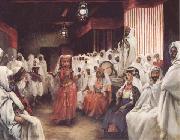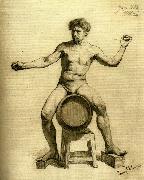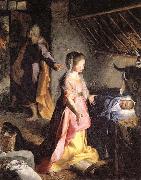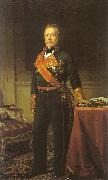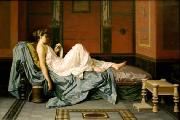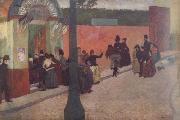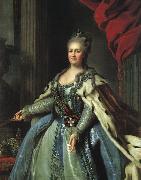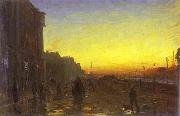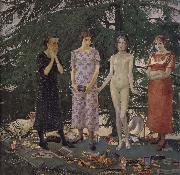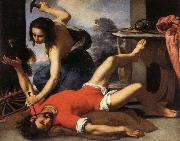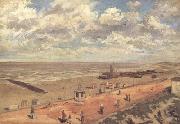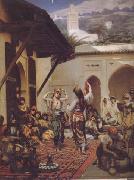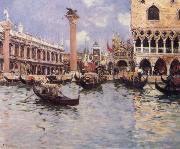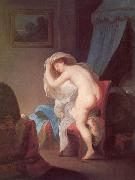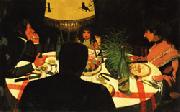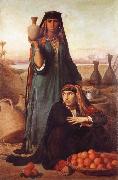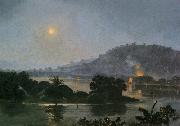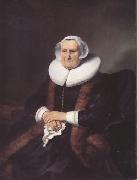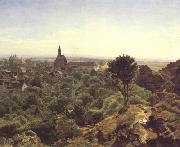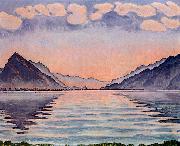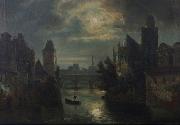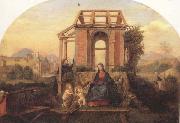|
|
|
|
|
|
|
|
|
|
 |
FALCONE, Aniello
|
|
Italian painter, Naples school (b. 1607, Napoli, d. 1656, Napoli).
|
|
|
|
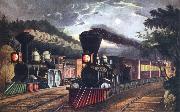 |
Fanny Palmer
|
|
One of the premier artists and stone lithographers .
American , 1812-1876
|
|
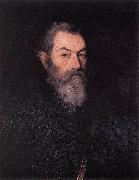 |
FARINATI, Paolo
|
|
Italian painter, Veronese school (b. 1524, Verona, d. 1606, Verona) |
|
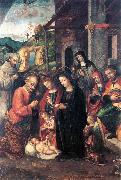 |
FASOLO, Bernardino
|
|
Italian painter, Genovese school (b. ca. 1489, Pavia, d. after 1526, Genova) |
|
|
|
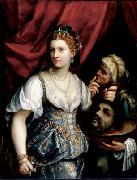 |
Fede Galizia
|
|
(1578 - 1630) was an Italian Renaissance painter, a pioneer of the still life genre.
Fede Gallizi, better known as Galizia, was born in Milan in 1578. Her father, Nunzio Galizia, also a painter of miniatures, had moved to Milan from Trento. Fede (whose name means "faith") learned to paint from him. By the age of twelve, she was sufficiently accomplished as an artist to be mentioned by Gian Paolo Lomazzo, a painter and art theorist friend of her father, who wrote, "This girl dedicates herself to imitate our most extraordinary art."
At a young age, Fede was already an established portrait painter handling many commissioned works. Perhaps it was her father's influence as a miniaturist that led to Fede's attention to detail in her portraits. Her treatment of jewels and clothing made her a very desirable portrait painter. She was often commissioned to paint religious and secular themes as well. Several of her paintings based on the deuterocanonical story of Judith and Holofernes, a popular theme in art of the period, survive in private collections. Perhaps her earliest was Judith and Her Handmaiden painted in 1596 which is now in Sarasota Florida at the Ringling Museum of Art. She also created miniatures and altarpieces for convents. |
|
|
|
|
|
|
|
|
|
|
|
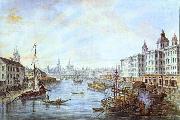 |
Fedor Alekseev
|
|
(c. 1753 ?C November 23, 1824) was an early Russian painter of landscape art.
After training in the Saint Petersburg Imperial Academy of Arts, he spent three years in Venice studying the works of famous French and Italian landscape painters.
Returning to Saint Petersburg to work, his popularity grew over time. In 1800, Emperor Paul of Russia commissioned a series of paintings of Moscow from him.
|
|
|
|
|
|
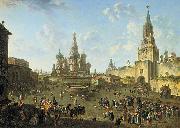 |
Fedor Yakovlevich Alekseev
|
|
Fedor Yakovlevich Alekseev Russian: (c. 1753 - November 23, 1824) was an early Russian painter of landscape art.
After training in the Saint Petersburg Imperial Academy of Arts, he spent three years in Venice studying the works of famous French and Italian landscape painters.
Returning to Saint Petersburg to work, his popularity grew over time. In 1800, Emperor Paul of Russia commissioned a series of paintings of Moscow from him.
|
|
|
|
|
|
|
|
|
|
|
|
|
|
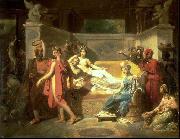 |
Felix Auvray
|
|
a French historical painter, was born at Cambrai in 1800. He was a pupil of Momal in Valenciennes, and afterwards of Gros in Paris. He exhibited in 1824, 'St. Louis a Prisoner,' and in 1827, 'Gautier de Châtillon defending St. Louis against the Saracens,' now in the Museum of Cambrai; 'St. Paul at Athens,' &c. He died in 1833, in his native city.
|
|
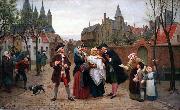 |
Felix de Vigne
|
|
(16 March 1806 - 5 December 1862) was a Belgian painter.
De Vinge was a history painter, engraver, art historian, and instructor at the Royal Academy of Fine Arts (Ghent). In 1847 he published Recherches historiques sur les costumes civils et militaires, an illustrated compendium of the flags, shields and costumes of medieval guilds and military groups.
He was the brother of sculptor Pieter De Vigne (1812-1877), father of Brussels architect Edmond De Vinge (1841-1918), and the stepfather of painter Jules Breton.
|
|
|
|
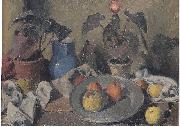 |
Felix Esterl
|
|
(1894 -1931 ) - Painter
painted Still life with fruits, foliage plants and jug in |
|
|
|
|
|
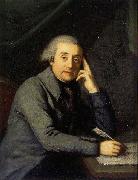 |
Felix Maria Diogg
|
|
(b Andermatt, 1 July 1762; d Rapperswil, Schwyz, 19 Feb 1834). Swiss painter. From 1782 he was a pupil of Johann Melchior Wyrsch in Besanion, under whom he developed the essential aspects of his portrait style. He also studied further in Rome and Naples from 1786 to 1788. He was capable of executing bright, incisive portraits in the manner of Angelica Kauffman, as in Portrait of an Artist or psychological studies, best seen in Ulysses von Salis-Marschlins. Several of his group portraits, such as the Esslinger Family, show the influence of Italian and British painting, with which he seemed to be familiar. He was a friend of Johann Kaspar Lavater, discoursed with Goethe and enjoyed the company of the Swiss historian Johannes von Miller (1752-1809), whose portrait he painted. His portraits are generally bust-length types set against a solid, dark background. This format was favoured by his Swiss clientele and is seen in Burgomaster Heinrich Krauer (1799; Lucerne, Kstmus.), which also reveals the dignified wooden pose frequently selected by his models. His direct, fashionable treatment of the sitter attracted a wide range of clients from all levels of society. He seemed to be as much at ease painting the Empress of Russia, Yelisaveta Alekseyevna (1814; Karlsruhe, Staatl. Ksthalle) as he was portraying the bourgeoisie of central Switzerland. |
|
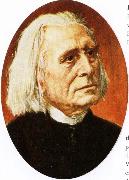 |
felix mendelssohn
|
|
Period: Romantic (1820-1869)
Country: Germany
Born: February 03, 1809 in Hamburg, Germany
Died: November 04, 1847 in Leipzig, Germany |
|
|
|
|
|
|
|
|
|
|
|
|
|
|
|
|
|
 |
Ferdinand Keller
|
|
Ferdinand Keller (born 5 August 1842 in Karlsruhe; died 8 July 1922 in Baden-Baden) was a German painter.
|
|
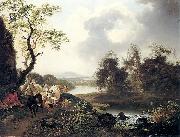 |
Ferdinand Kobell
|
|
(born in Mannheim, 7 June 1740; died in Munich, 1 February 1799) was a German painter and engraver.
He was studying at the University of Heidelberg when the Elector of Bavaria, admiring a landscape, aided him to devote his entire time to painting. He became the pupil of Peter Verschaffelt. He next studied art in Paris (1768-1769). On his return, he was appointed painter to the Cabinet (court painter), and later professor at the Academy. In 1793, he moved to Munich. He was appointed director of the Mannheim Gallery (1798) but died before entering on his duties.
|
|
|
|
|
|
|
|
|
|
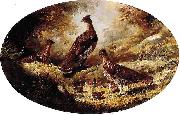 |
Ferdinand Richardt
|
|
(10 April 1819 - 29 October 1895) Danish-American artist, in Denmark known for his lithographs of manor houses, and in the U.S. for his paintings of Niagara Falls and other landscapes.
Ferdinand Richardt, the son of Johan Joachim Richardt and Johanne Frederikke ne Bohse, was born in Brede, north of Copenhagen in 1819. His father ran the inn/company store at the Brede factory. In 1832 the family relocated to nearby Ørholm to operate the inn at the paper-factory there. In 1839, they moved to Copenhagen.
Ferdinand became briefly a carpenter's apprentice in 1835, but soon decided on a career in fine art, following the lead of his brother Carl. Beginning in 1836 Ferdinand studied at the Royal Danish Academy of Art under the architect and designer Gustav Friedrich Hetsch, the historical painter J. L. Lund and the classical sculptor Bertel Thorvaldsen. Richardt was awarded the Academy's small and large silver medals in 1839 and 1840, respectively.
In 1847, he received a five year stipend from the crown, on the condition that he deliver one architectural and one landscape painting each year to the royal collection. Between 1855 and 1859 he visited in the United States. He maintained a studio in New York City, while traveling during the summers to Niagara Falls and to various destinations east of the Mississippi River.
After returning to Denmark, Richardt married the widow Sophia Schneider ne Linnemann (1831-1888) in 1862. They traveled for part of a year in southern Europe, and from 1863 they lived for a period in England. In February 1864, Queen Victoria invited Richardt to display his art work to the court at Windsor Castle.
In 1872 and 1873, Richardt sold many of his accumulated paintings and lithographs before emigrating to the United States with his family. They lived first in the town of Niagara Falls, N.Y. where the artist again produced canvases depicting the great waterfall and the surrounding area. In 1875, the Richardts moved to San Francisco, and finally in 1876 to Oakland. For the remaining twenty years of his life Richardt was active as a painter of California landscapes with a concentration on the San Francisco Bay Area. He exhibited and sold his works in San Francisco until at least 1887. At the same time he taught drawing privately. At his death in 1895, Richardt left a daughter, Johanna (1862-1897), and a stepson, Joost Schneider.
|
|
|
|








